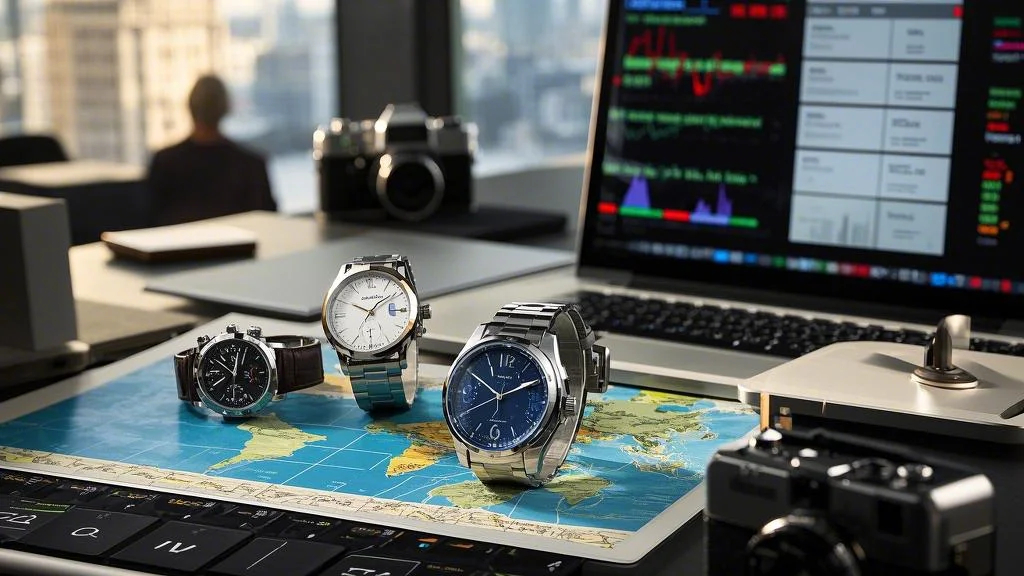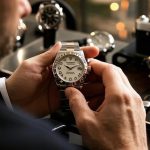Why Luxury Watches Are Gaining Attention as Investments
In recent years, luxury watches as investment have become a popular alternative asset class, attracting both seasoned collectors and new investors. High-end timepieces from brands like Rolex, Patek Philippe, and Audemars Piguet have shown remarkable appreciation in value, often outperforming traditional investments like stocks and bonds. Unlike other assets, luxury watches combine aesthetic appeal with mechanical craftsmanship, making them highly desirable. However, investing in luxury watches requires a deep understanding of the market, including factors like brand reputation, rarity, and condition. While the potential for high returns is enticing, it’s important to approach this market with caution and conduct thorough research. By understanding the nuances of luxury watches as investment, you can make informed decisions that align with your financial goals.
How to Evaluate Luxury Watches for Investment Potential
When considering luxury watches as investment, it’s crucial to evaluate several key factors to determine their potential for appreciation. First, focus on the brand. Established brands like Rolex, Patek Philippe, and Audemars Piguet have a proven track record of holding and increasing in value. Next, consider the model and its rarity. Limited-edition or discontinued models often command higher prices due to their scarcity. The condition of the watch is also critical; pieces in mint condition with original packaging and documentation are more valuable. Additionally, provenance—the watch’s history and previous ownership—can significantly impact its value. By carefully assessing these factors, you can identify luxury watches with strong investment potential and minimize the risk of overpaying or purchasing a counterfeit piece.
Investing in Collectibles: Beyond Luxury Watches
While luxury watches as investment are a popular choice, they are just one category within the broader world of collectibles. Investing in collectibles can include a wide range of items, from fine art and vintage cars to rare books and antique furniture. Like luxury watches, the value of collectibles is often driven by factors such as rarity, condition, and provenance. However, investing in collectibles requires specialized knowledge and a passion for the items you’re collecting. It’s also important to consider the liquidity of these investments, as selling collectibles can take time and may require finding the right buyer. By diversifying your portfolio with a mix of collectibles, including luxury watches, you can tap into the potential of this unique asset class while enjoying the beauty and history of the items you own.
Sports Memorabilia Investing: A Growing Market
Another exciting area within the collectibles market is sports memorabilia investing. Items like signed jerseys, game-used equipment, and trading cards have seen significant appreciation in value, driven by the passion of sports fans and the growing popularity of auctions. High-profile sales, such as the record-breaking auction of a Mickey Mantle baseball card, have brought attention to the potential of sports memorabilia as an investment. However, like luxury watches, investing in sports memorabilia requires expertise and careful evaluation of authenticity and condition. It’s also important to stay informed about trends in the sports world, as the value of memorabilia can be influenced by player performance, historical significance, and fan demand. By exploring sports memorabilia investing, you can combine your love of sports with the potential for financial returns.

Investing in Rare Coins: A Timeless Asset
For those interested in tangible assets, investing in rare coins offers a timeless and historically significant option. Rare coins have been collected and traded for centuries, and their value is often driven by factors such as age, rarity, condition, and historical significance. Unlike luxury watches or sports memorabilia, rare coins are often smaller and easier to store, making them a convenient investment. However, the market for rare coins can be complex, with prices influenced by factors like metal content, mint errors, and collector demand. It’s essential to work with reputable dealers and grading services to ensure the authenticity and quality of your coins. By incorporating investing in rare coins into your portfolio, you can diversify your investments and own a piece of history.
Digital Asset Investment: The Future of Collectibles?
As technology continues to evolve, so do investment opportunities. One of the most intriguing developments is the rise of digital asset investment, including non-fungible tokens (NFTs) and blockchain-based collectibles. These digital assets represent ownership of unique items, such as digital art, virtual real estate, or even tweets. While the concept may seem abstract, the market for digital assets has grown rapidly, with some NFTs selling for millions of dollars. However, like any emerging market, digital asset investment comes with risks, including regulatory uncertainty and market volatility. It’s important to approach this space with caution and conduct thorough research before investing. By staying informed and exploring the potential of digital assets, you can position yourself at the forefront of this innovative and rapidly evolving market.
How to Build a Diversified Collectibles Portfolio
Building a diversified collectibles portfolio involves more than just investing in luxury watches or rare coins. To minimize risk and maximize returns, consider incorporating a mix of assets, including sports memorabilia, fine art, and digital collectibles. Diversification helps protect your portfolio from market fluctuations and ensures that you’re not overly reliant on a single asset class. Additionally, it’s important to stay informed about market trends and seek advice from experts in each category. Whether you’re investing in sports memorabilia, rare coins, or digital assets, a well-rounded portfolio can provide both financial returns and personal enjoyment. By taking a strategic approach to collectibles investing, you can achieve long-term success in this dynamic and exciting market.
Common Mistakes to Avoid in Collectibles Investing
Investing in collectibles, whether it’s luxury watches, sports memorabilia, or rare coins, can be highly rewarding, but it’s not without its challenges. One common mistake is failing to conduct thorough due diligence before making a purchase. Without a clear understanding of the item’s authenticity, condition, and market value, you may end up overpaying or buying a counterfeit. Another mistake is neglecting to diversify your portfolio. Focusing too heavily on a single category or item can expose you to significant risk if the market for that asset declines. Additionally, some investors underestimate the importance of storage and insurance, which are crucial for protecting your investments. To avoid these pitfalls, take the time to research and diversify your portfolio, and consider consulting with experts to ensure your strategy aligns with your goals.
Conclusion
Investing in collectibles, from luxury watches to digital assets, offers a unique opportunity to combine financial returns with personal passion. By understanding the nuances of each asset class and conducting thorough research, you can build a diversified portfolio that aligns with your investment goals. Whether you’re drawn to the timeless appeal of rare coins, the excitement of sports memorabilia, or the cutting-edge potential of digital collectibles, taking a strategic approach can help you achieve long-term success. As with any investment, it’s important to stay informed, seek expert advice, and approach the market with caution. By doing so, you can enjoy the rewards of collectibles investing while minimizing the risks.


